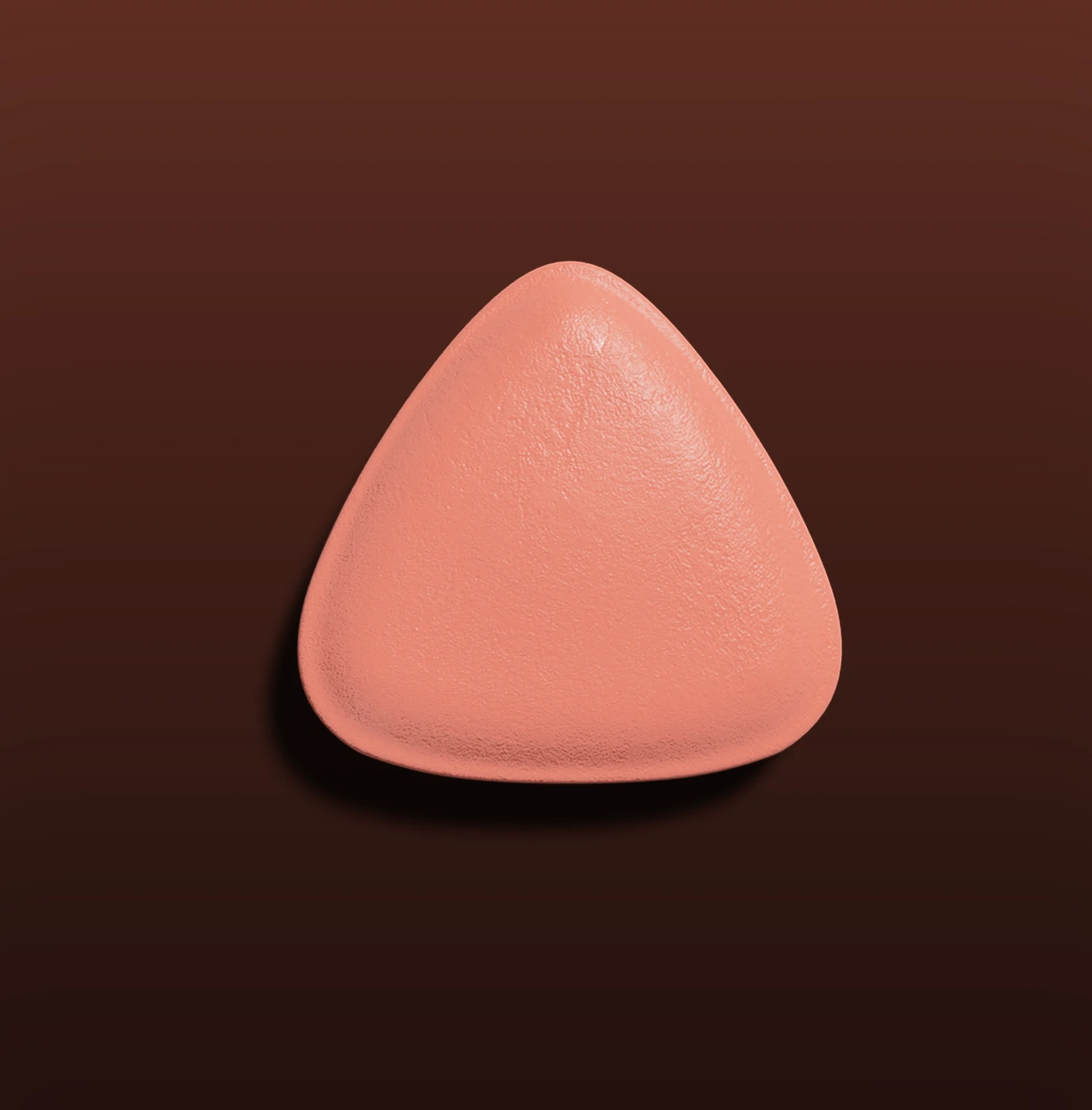Contents
Apomorphine is a well-researched drug with a long history in the medical field. Originally developed as an emetic, which is a medicine used to induce vomiting, apomorphine has since found a wide array of applications, including treating erectile dysfunction. As a dopamine agonist and vasodilator, apomorphine interacts with your brain's dopamine receptors to influence mood, sexual function and performance.
Let's learn more about its history and uses for ED.
Brief History of Apomorphine
Apomorphine was discovered in the mid-19th century and initially used for treating Parkinson's disease. It belongs to the dopaminergic class of drugs and stimulates the brain's dopamine receptors — particularly D1 and D2 receptors, which are key neurotransmitters impacting moods, motivation, stamina and pleasure. Thus, apomorphine has become a key player in mental health and sexual function.
Researchers discovered that apomorphine could increase dopamine production and decrease erectile dysfunction symptoms by synthesizing N-demethylation, O-glucuronidation and O-methylation. These crucial processes help modify apomorphine's chemical structure for better bioavailability and significant results for those struggling to get or maintain an erection.
What Does Apomorphine Do?
Erectile dysfunction (ED) affects millions of men worldwide and is often linked to poor circulation, high blood pressure, psychological factors like performance anxiety, and dopamine deficiencies. ED medications typically focus on increasing blood flow, but research has shown there's more to a satisfying sex life than cardiovascular health.
Erectile dysfunction treatments with apomorphine trigger dopamine release, activating the brain's reward system to boost arousal and erection quality. Apomorphine works differently from other PDE5 inhibitors for ED, such as sildenafil (Viagra©) and tadalafil (Cialis©), by providing the elements for a mind-body experience.
Apomorphine helps initiate erections through the central nervous system, not through direct vascular effects. Thus, it is a particularly useful for men with erectile dysfunction linked to mental health, low dopamine or stress.
Sublingual Apomorphine: Bioavailability & Dosage
Sublingual apomorphine dosing allows for rapid absorption because it quickly dissolves under the tongue. This convenient method helps improve bioavailability to reach the bloodstream faster and more efficiently. However, standard apomorphine effects can vary and doses are best determined by a doctor.
In many cases, sublingual apomorphine starts to work within 20 minutes and can last as long as two hours. This is because under-the-tongue administration allows the medicine to absorb through the mucous membranes and bypass the digestive system, which results in rapid onset compared to chewable tablets and ED pills, essential for spontaneous sex and intimacy.
Unlike traditional PDE5 inhibitors without sublingual apomorphine, apomorphine-enhanced ED medications do not require significant sexual stimulation to work. Talk to your doctor today to determine if apomorphine is right for you.
Psychogenic ED: What You Should Know
Psychogenic erectile dysfunction (ED) is a condition where psychological factors affect a man's ability to get or maintain an erection and is generally caused by stress, depression, anxiety or past trauma. These negative experiences create a cycle where worry about performance worsens the problem. Unlike organic ED, which is commonly caused by poor circulation to the penis, psychogenic sexual dysfunction stems from mental and emotional well-being.
ED caused by psychological factors, or adrenaline-mediated erectile dysfunction, can tamper the brain's signaling pathways that manage erection and sexual excitement. By directly stimulating dopamine receptors in the brain, apomorphine helps reduce anticipatory anxiety and reignites the natural erection process to restore confidence and boost mood.
While sublingual apomorphine can provide immediate ED symptom relief, its primary benefit is its ability to reestablish organic penile function for long-term improvement. It's also a savvy alternative mechanism for men who don't respond well to traditional PDE5 inhibitors or prefer a more personalized approach. When combined with mental health counseling and cognitive behavioral therapy (CBT), apomorphine can help men regain control over their sex life and sense of self.
Apomorphine vs. Traditional PDE5 Inhibitors for Erectile Dysfunction
Traditional PDE5 inhibitors for ED improve penile blood flow by relaxing blood vessels. Conversely, apomorphine for ED activates dopamine receptors to inspire a vigorous sex drive. Therefore, erectile dysfunction treatments with traditional ED medications (sildenafil and tadalafil) plus apomorphine can be a game-changing triple threat.
Apomorphine provides a holistic solution that addresses the psychological and physiological factors of sexual performance and satisfaction. This additional ingredient may also be critical for men experiencing ED caused by medication side effects.
Potential Side Effects
Like any ED treatment, apomorphine has potential side effects. The most commonly reported issues include:
Nausea
Dizziness
Low blood pressure
Headache
Fatigue
Dry mouth
Runny nose
Sweating
Using an apomorphine drug to treat erectile dysfunction is a revolutionary approach in ED self-care. However, because sublingual dosing is potent, patients must take controlled doses to avoid dopamine receptor overstimulation. Patients should discuss their health with a doctor before starting apomorphine and report unusual symptoms immediately.
Erectile Dysfunction Self-Care Starts with Apomorphine
Erectile dysfunction is a complex condition influenced by multiple factors, including physical, mental and emotional elements. Taking charge of your sexual health means understanding your body's unique needs.
While traditional PDE5 inhibitors center on improving vascular health, apomorphine offers a different, dopamine-driven approach to enhance pleasure and arousal at a neurological level. This dual-action mechanism makes it a promising option for men who:
Want to know how to increase dopamine
Need a new way to address erectile dysfunction symptoms
Prefer a sublingual medical treatment for ED
Require an ED medication with a therapeutic effect
Rugiet's sublingual apomorphine medication provides a fast-acting solution beyond traditional ED treatments to support arousal, confidence and intimacy in a way that feels natural. A conversation with your doctor is a great place to start if you're exploring new options for treating erectile dysfunction.
SOURCES:
Auffret, M., Drapier, S. & Vérin, M. The Many Faces of Apomorphine: Lessons from the Past and Challenges for the Future. Drugs R D 18, 91–107 (2018). https://doi.org/10.1007/s40268-018-0230-3
Choi, Jaehwa, and Kristen Ashley Horner. “Dopamine Agonists.” PubMed, StatPearls Publishing, 26 June 2023, www.ncbi.nlm.nih.gov/books/NBK551686/.
Henriksen, T., Katzenschlager, R., Bhidayasiri, R., Staines, H., Lockhart, D., & Lees, A. (2023). Practical use of apomorphine infusion in Parkinson's disease: lessons from the TOLEDO study and clinical experience. Journal of neural transmission (Vienna, Austria : 1996), 130(11), 1475–1484. https://doi.org/10.1007/s00702-023-02686-7
Kawahata, I., Finkelstein, D. I., & Fukunaga, K. (2024). Dopamine D1–D5 Receptors in Brain Nuclei: Implications for Health and Disease. Receptors, 3(2), 155-181. https://doi.org/10.3390/receptors3020009
Altwein, J. E., and F. U. Keuler. “Oral Treatment of Erectile Dysfunction with Apomorphine SL.” Urologia Internationalis, vol. 67, no. 4, 2001, pp. 257–263, pubmed.ncbi.nlm.nih.gov/11741126, https://doi.org/10.1159/000051001.
Agbo, Felix, et al. “Population Pharmacokinetic Analysis of Apomorphine Sublingual Film or Subcutaneous Apomorphine in Healthy Subjects and Patients with Parkinson’s Disease.” Clinical and Translational Science, vol. 14, no. 4, 2 May 2021, pp. 1464–1475, https://doi.org/10.1111/cts.13008.
Leslie SW, Sooriyamoorthy T. Erectile Dysfunction. [Updated 2024 Jan 9]. In: StatPearls [Internet]. Treasure Island (FL): StatPearls Publishing; 2025 Jan-. https://www.ncbi.nlm.nih.gov/books/NBK562253/
Andrej Starc. “Predictors of Sexual Satisfaction: An International Study.” Acta Clinica Croatica, vol. 61, no. 3, 1 Jan. 2022, www.ncbi.nlm.nih.gov/pmc/articles/PMC10364113/, https://doi.org/10.20471/acc.2022.61.03.10.
Argiolas, A., Argiolas, F. M., Argiolas, G., & Melis, M. R. (2023). Erectile Dysfunction: Treatments, Advances and New Therapeutic Strategies. Brain sciences, 13(5), 802. https://doi.org/10.3390/brainsci13050802
Broderick G. A. (2003). Oral pharmacotherapy and the contemporary evaluation and management of erectile dysfunction. Reviews in urology, 5 Suppl 7(Suppl 7), S9–S20. https://pubmed.ncbi.nlm.nih.gov/16985983/
Paick JS, Lee SW. The Neural Mechanism of Apomorphine-Induced Erection: An Experimental Study by Comparison with Electrostimulation-Induced Erection in the Rat Model. Journal of Urology [Internet]. 1994 Dec 1 [cited 2025 Mar 3];152(6 Part 1):2125–8. Available from: https://doi.org/10.1016/S0022-5347(17)32336-4
Maarten Albersen, et al. “Evaluation and Treatment of Erectile Dysfunction.” Medical Clinics of North America/the Medical Clinics of North America, vol. 95, no. 1, 1 Jan. 2011, pp. 201–212, https://doi.org/10.1016/j.mcna.2010.08.016.
[xiv] Mulhall, J. P. (2002). Sublingual apomorphine for the treatment of erectile dysfunction. Expert Opinion on Investigational Drugs, 11(2), 295–302. https://doi.org/10.1517/13543784.11.2.295
Wang, Zhijun, and Moses SS Chow. “Overview and Appraisal of the Current Concept and Technologies for Improvement of Sublingual Drug Delivery.” Therapeutic Delivery, vol. 5, no. 7, July 2014, pp. 807–816, https://doi.org/10.4155/tde.14.50.
Simonsen, Ulf, et al. “Modulation of Dopaminergic Pathways to Treat Erectile Dysfunction.” Basic & Clinical Pharmacology & Toxicology, vol. 119, no. 119, Oct. 2016, pp. 63–74, https://doi.org/10.1111/bcpt.12653.
Rosen, Raymond C. “PSYCHOGENIC ERECTILE DYSFUNCTION.” Urologic Clinics of North America, vol. 28, no. 2, May 2001, pp. 269–278, https://doi.org/10.1016/s0094-0143(05)70137-3.
Allen, M. S., Wood, A. M., & Sheffield, D. (2023). The Psychology of Erectile Dysfunction. Current Directions in Psychological Science, 32(6), 487-493. https://doi.org/10.1177/09637214231192269
[xxvii] Melis, M. R., Sanna, F., & Argiolas, A. (2022). Dopamine, Erectile Function and Male Sexual Behavior from the Past to the Present: A Review. Brain sciences, 12(7), 826. https://doi.org/10.3390/brainsci12070826
Guillén, Virginia, et al. “Apomorphine for the Treatment of Erectile Dysfunction: Systematic Review and Meta-Analysis.” Archives of Sexual Behavior, vol. 49, no. 8, 22 Sept. 2020, pp. 2963–2979, https://doi.org/10.1007/s10508-020-01817-5.
Heaton, J. P., Morales, A., Adams, M. A., Johnston, B., & el-Rashidy, R. (1995). Recovery of erectile function by the oral administration of apomorphine. Urology, 45(2), 200–206. https://doi.org/10.1016/0090-4295(95)80005-0
Broderick G. A. (2003). Oral pharmacotherapy and the contemporary evaluation and management of erectile dysfunction. Reviews in urology, 5 Suppl 7(Suppl 7), S9–S20. https://pubmed.ncbi.nlm.nih.gov/16985983/
Lal, Samarthji, et al. “Apomorphine and Psychopathology’.” Neurosurgery, and Psychiatry, vol. 38, 1975, pp. 722–726, https://pmc.ncbi.nlm.nih.gov/articles/PMC1083255/pdf/jnnpsyc00181-0098.pdf
Huang, S. A., & Lie, J. D. (2013). Phosphodiesterase-5 (PDE5) Inhibitors In the Management of Erectile Dysfunction. P & T : a peer-reviewed journal for formulary management, 38(7), 407–419. https://pmc.ncbi.nlm.nih.gov/articles/PMC3776492/
Montorsi, F, et al. “Apomorphine-Induced Brain Modulation during Sexual Stimulation: A New Look at Central Phenomena Related to Erectile Dysfunction.” International Journal of Impotence Research, vol. 15, no. 3, June 2003, pp. 203–209, www.nature.com/articles/3900999, https://doi.org/10.1038/sj.ijir.3900999.
Brock, G. (2002). Oral agents: First-line therapy for erectile dysfunction. European Urology Supplements, 1(8), 12–18. https://www.eu-openscience.europeanurology.com/article/S1569-9056(02)00113-6/fulltext
“Drugs That May Cause Erection Problems: MedlinePlus Medical Encyclopedia.” Medlineplus.gov, 2019, https://medlineplus.gov/ency/article/004024.htm
Apomorphine Sublingual: MedlinePlus Drug Information.” Medlineplus.gov, https://medlineplus.gov/druginfo/meds/a620044.html
Vaillancourt, D. E., Schonfeld, D., Kwak, Y., Bohnen, N. I., & Seidler, R. (2013). Dopamine overdose hypothesis: evidence and clinical implications. Movement disorders : official journal of the Movement Disorder Society, 28(14), 1920–1929. https://doi.org/10.1002/mds.25687
Yafi, F. A., Jenkins, L., Albersen, M., Corona, G., Isidori, A. M., Goldfarb, S., Maggi, M., Nelson, C. J., Parish, S., Salonia, A., Tan, R., Mulhall, J. P., & Hellstrom, W. J. (2016). Erectile dysfunction. Nature reviews. Disease primers, 2, 16003. https://doi.org/10.1038/nrdp.2016.3
Schellekens, A. F., Grootens, K. P., Neef, C., Movig, K. L., Buitelaar, J. K., Ellenbroek, B., & Verkes, R. J. (2010). Effect of apomorphine on cognitive performance and sensorimotor gating in humans. Psychopharmacology, 207(4), 559–569. https://doi.org/10.1007/s00213-009-1686-1


